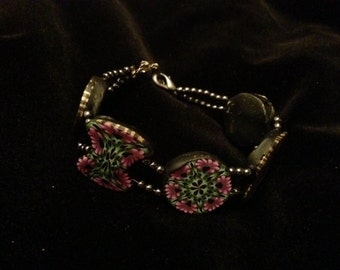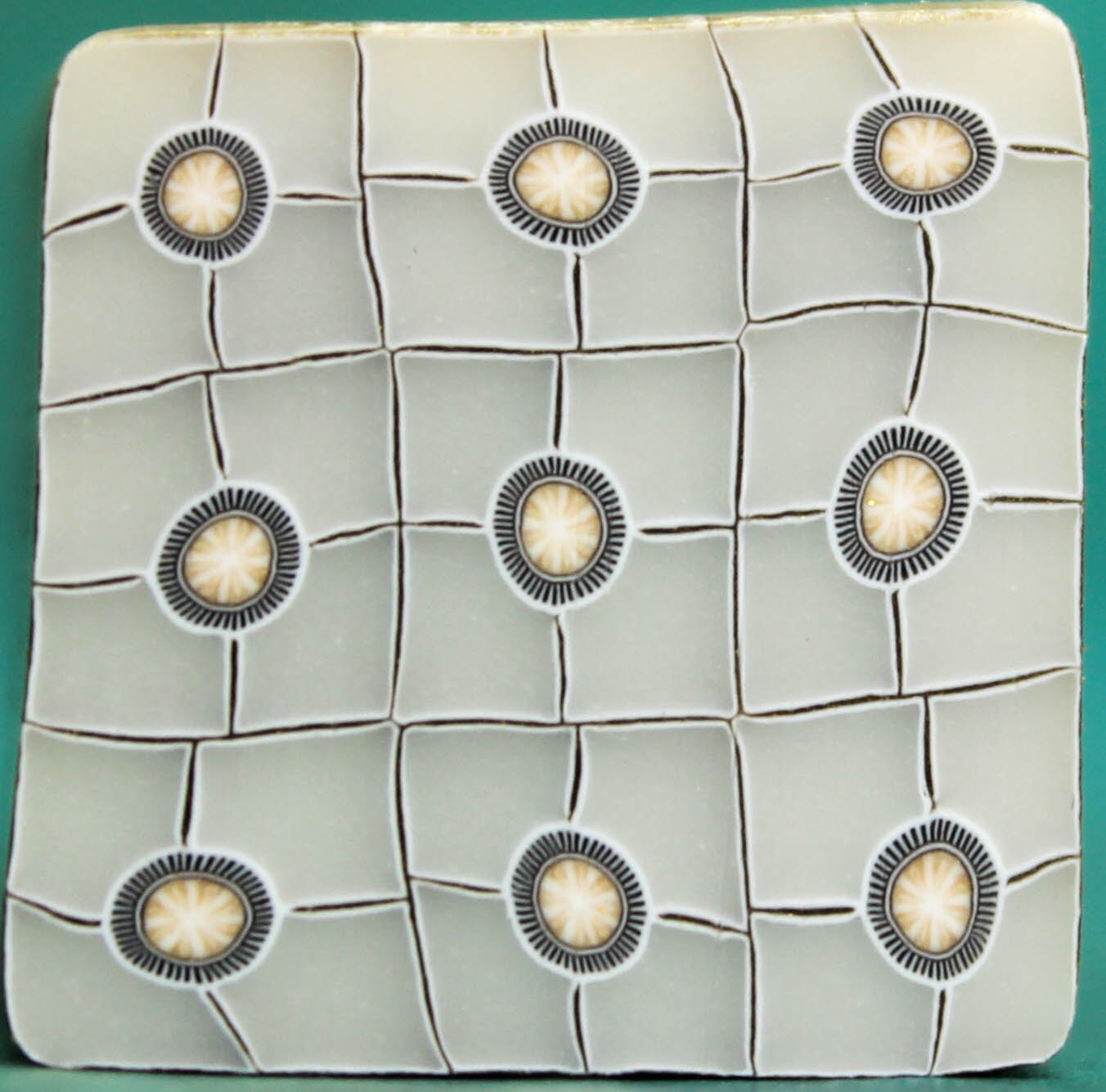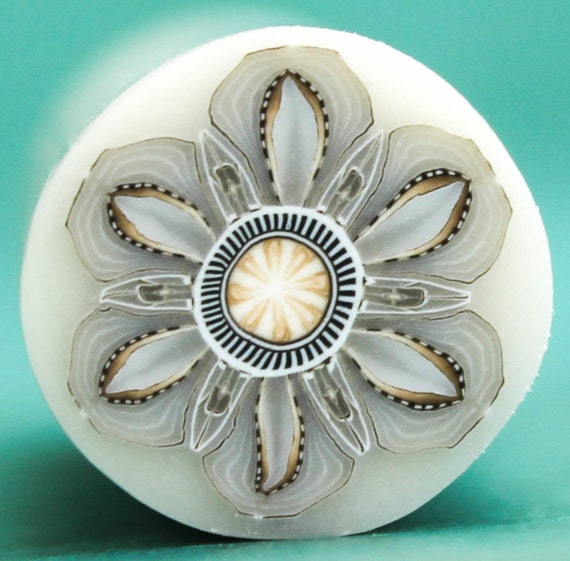

One of the most challenging aspects of working with Cernit is that it can sometimes change color during baking. You can see the porcelain effect in this photograph. She gave it to me to show me how strong Cernit polymer clay is. This lovely rose bracelet was made by Marina Taenkova of Marka Decor. So if someone tells you that Cernit is porcelain-like, they haven’t checked on things lately. There is a separate line called Opaline, that is partially translucent. Now the Cernit Number One line is normal opaque polymer clay (not really all that translucent). Years ago, Cernit DID have a porcelain quality because many of the colors contained at least 50% translucent. This means that baked Cernit polymer clay will have a luminous quality, rather than a chalky one like Fimo, Souffle, or Sculpey III. If you hold any baked color of Cernit up to the light, you’ll be able to see a glow of light coming through it. What does that mean? It’s not hard like a porcelain teacup and it’s not matte like fired clay. Many people say that Cernit has a porcelain quality after baking. Cernit does bake with a slight sheen, quite similar to that of Fimo Professional. You’ll still see fingerprints, “the bumpies”, and, if you’re using translucent, plaques. Temperature makes a huge impact on this clay, so it would be an excellent one to use if you have cold hands or live in a cold climate.Īfter baking, you’ll find that Cernit has many of the same frustrations as any other clay. If you find that the Cernit is getting too droopy and soft or sticky while working with it, leave it to sit for a few minutes. Cernit does not leave much of a residue on your hands, but you will still want to wipe your hands with a baby wipe when you change to a lighter color or after you’ve been using red. You can usually peel apart clay that you’ve stuck together if you change your mind (not true for the translucent and metallic lines). It does have a good balance of sticking to itself (making construction easy) but not TOO good at sticking to itself. But it is a bit sticky and can stick to your fingers when it gets too warm. The clay isn’t waxy like Kato and isn’t chalky and sticky like Fimo Professional. Once conditioned, Cernit is quite stretchy in your hands and works well for die forming and other techniques where the stretching of the clay is important. This flat-backed oval dome is hollow, and was created using an oval-shaped cutter. Cernit is quite stretchy when unbaked, and sheets of clay work wonderfully with the die forming technique. The clay conditions easily and responds very well to the heat of your hands, soon becoming very smooth and workable. (This is true with many clay brands, by the way.) In most cases, I found that a slice of the clay would go through the pasta machine with little to no crumbling and flaking. This could be due to age (more popular colors such as black and white are always newer due to faster turnover), or it could just be that some colors are more soft. Once you slice off some of the clay and start working with it, you’ll notice that some colors are firmer than others. When you open the package, Cernit looks very similar to any other brand of polymer clay.

Any packages of that size are quite old.) (Note: Cernit used to come in a 62g package, but this was changed several years ago. The blocks come with a plastic package that’s heat-sealed on each end like a candy bar, so the packages are air-tight. So it’s more similar than it is different from the brands you’re already familiar with.Ĭernit comes in 56g (roughly the same as 2oz) package and some colors also come in larger 500g (just over one lb) packages. You can mix Cernit with any other brand of polymer clay, and you can use it for all the techniques you’re used to using when you create, such as extruding, mokume gane, caning, using texture sheets, etc. It comes in a bar, is a putty-like dough that you work with to create something, you can cure it in the oven, and you can carve, sand, drill, and paint it after baking.


Cernit polymer clay is, in general, just like any other brand of polymer clay.


 0 kommentar(er)
0 kommentar(er)
